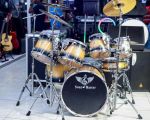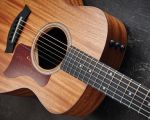What Instruments Are Used in Chinese Music?
Chinese music is a fascinating blend of ancient traditions and evolving styles. One of the most intriguing aspects of Chinese music is its diverse array of instruments, each with its own unique sound and history. Whether you're a music enthusiast or a beginner exploring the world of traditional music, understanding the key instruments in Chinese music will enrich your appreciation for this art form. Let's take a closer look at some of the most important instruments used in Chinese music.
1. Erhu: The Soul of Chinese Music
The erhu, often referred to as the "Chinese violin," is a two-stringed bowed instrument that plays a significant role in both traditional and contemporary Chinese music. Played with a bow, the erhu produces a rich, expressive sound. It is particularly known for its ability to evoke deep emotional responses from listeners, making it a central instrument in Chinese orchestras and solo performances. The instrument's history dates back over a thousand years, and it has evolved through the centuries to become one of the most recognizable instruments in China.
2. Guzheng: The Ancient Zither
The guzheng is a traditional Chinese zither, an ancient instrument with a history spanning over 2,000 years. It features a long, curved wooden body with up to 21 strings, and it is played by plucking the strings with the fingers or plectrums. The guzhen produces a melodic, resonant sound and is often associated with Chinese classical music. It is one of the oldest and most beloved instruments, frequently used to convey the delicate beauty of Chinese culture in music. Many performances today include this instrument to provide a harmonic foundation.
3. Pipa: The Chinese Lute
The pipa is a pear-shaped, four-stringed lute, often referred to as the "Chinese lute." It is played by plucking the strings with the fingers or a plectrum. The pipa has a long history, dating back to the Tang Dynasty, and it is known for its versatility and expressive potential. With its unique combination of plucking, strumming, and percussive techniques, the pipa can produce a wide range of sounds, from delicate and lyrical to powerful and dramatic. It remains a central instrument in traditional Chinese music, both in solo and ensemble performances.
4. Dizi: The Bamboo Flute
The dizi is a traditional Chinese bamboo flute known for its clear and bright sound. It has a distinctive timbre that is often described as vibrant and lively. The dizi is widely used in Chinese folk music and operatic performances. What sets it apart from other flutes is the "mo," or membrane, which is placed over one of the holes to create a unique buzzing sound. The dizi is also commonly featured in Chinese orchestras and is known for its ability to express both joy and sadness in its melodies.
5. Sheng: The Chinese Mouth Organ
The sheng is a traditional Chinese mouth organ, often likened to a harmonica but much larger in size. It consists of a series of bamboo pipes arranged in a circular pattern, with a central chamber that allows for air to be blown in. The sheng produces a rich, harmonic sound and has been an important part of Chinese music for over 3,000 years. It is capable of creating complex, layered melodies and is frequently used in both solo and ensemble performances to add depth and texture to the music.
6. Yangqin: The Hammered Dulcimer
The yangqin is a traditional Chinese hammered dulcimer that originated from the Persian santur. It is played by striking the strings with mallets, creating a distinctive, metallic sound. The yangqin is commonly used in Chinese orchestras and has become an essential part of traditional Chinese music, providing both melody and rhythm. Its bright and resonant tones are often used in traditional performances and have made it a favorite in ensemble settings, particularly for adding a layer of shimmering texture to the overall sound.
7. The Future of Traditional Chinese Instruments
While many traditional Chinese instruments are still widely used in contemporary performances, there has been a growing trend to incorporate these instruments into modern genres such as pop, rock, and fusion music. The erhu, pipa, and guzheng, among others, are being explored by musicians around the world, leading to exciting collaborations and new musical innovations. This blend of tradition and modernity continues to evolve, and Chinese instruments are gaining recognition on the global stage.
8. Conclusion: A Rich Musical Legacy
The instruments used in Chinese music each have a unique history and cultural significance. Whether you’re listening to the soulful erhu or the vibrant dizi, the beauty and complexity of these instruments offer a window into China’s rich musical traditions. If you're intrigued by the history of Chinese music and its instruments, consider learning more through performances, recordings, or even by learning to play one of these fascinating instruments yourself. The journey through Chinese music can open up a whole new world of sound and emotion that has captivated listeners for centuries.








